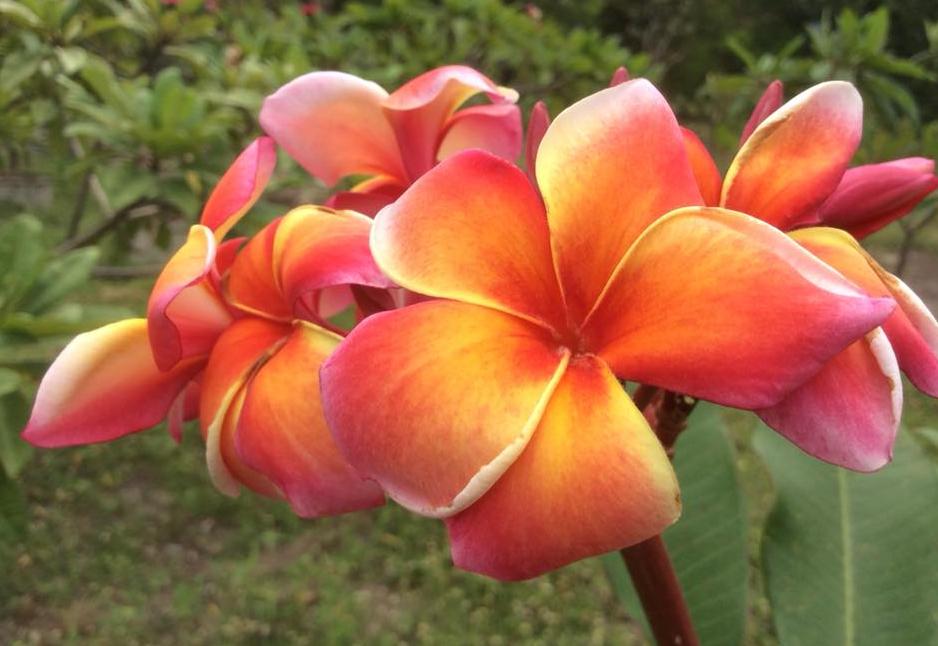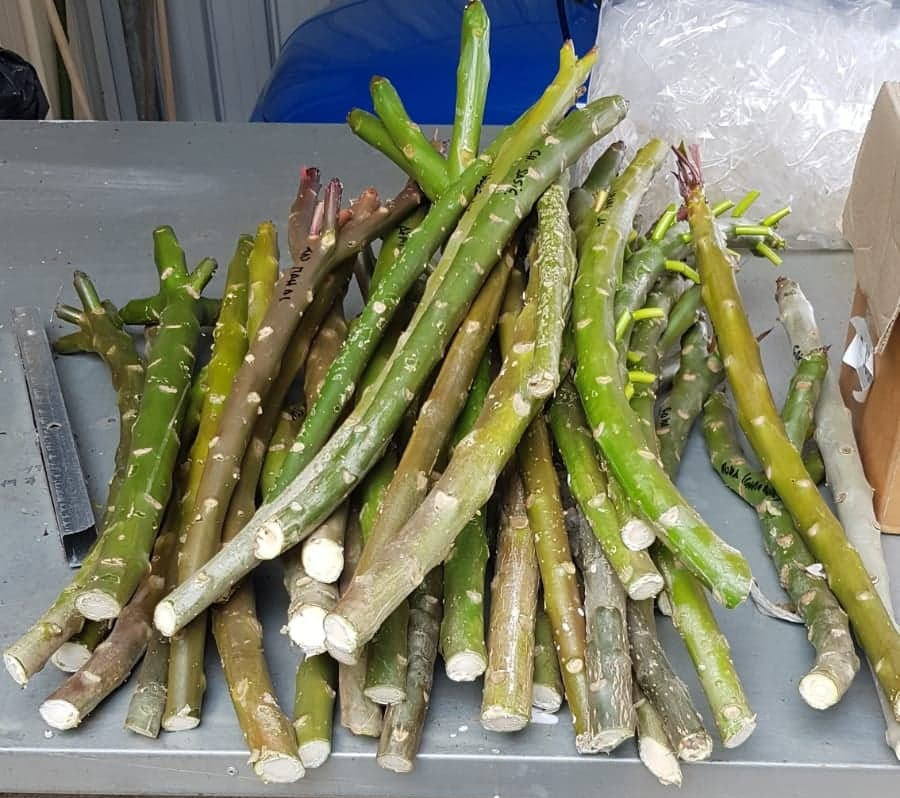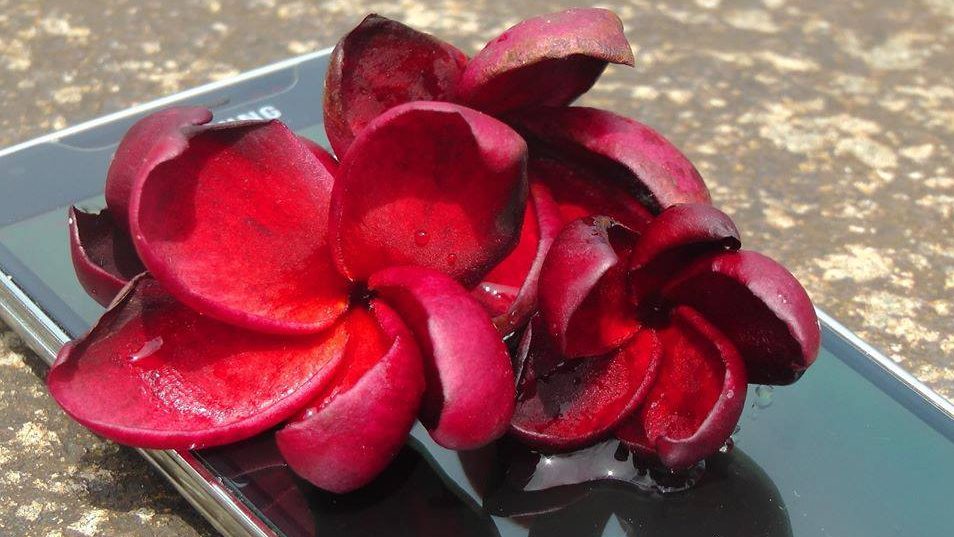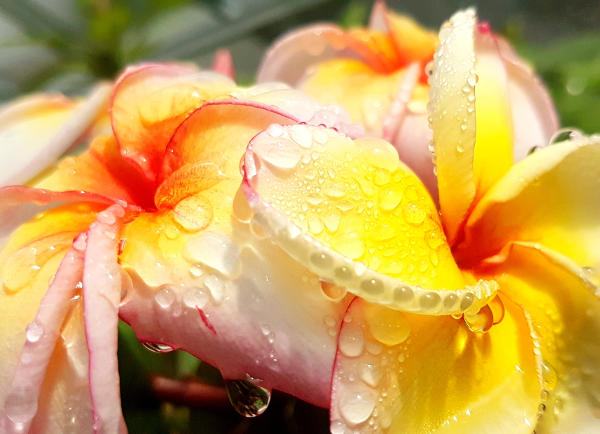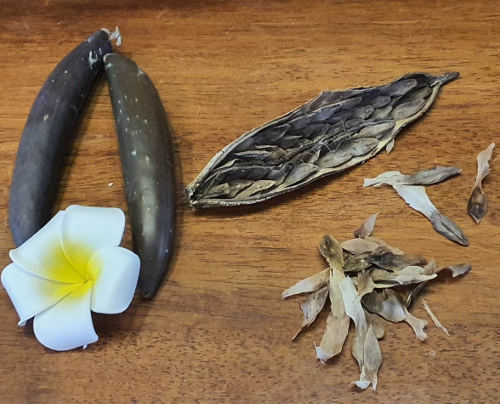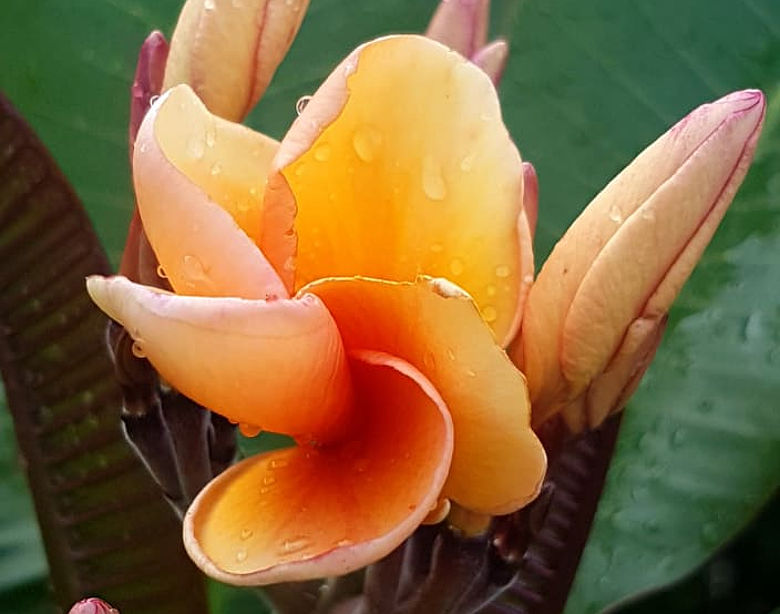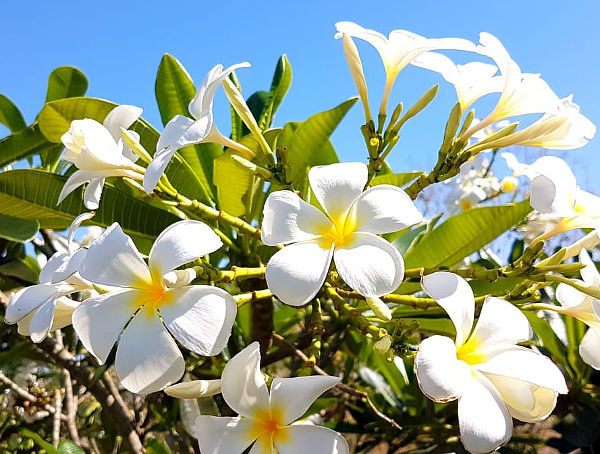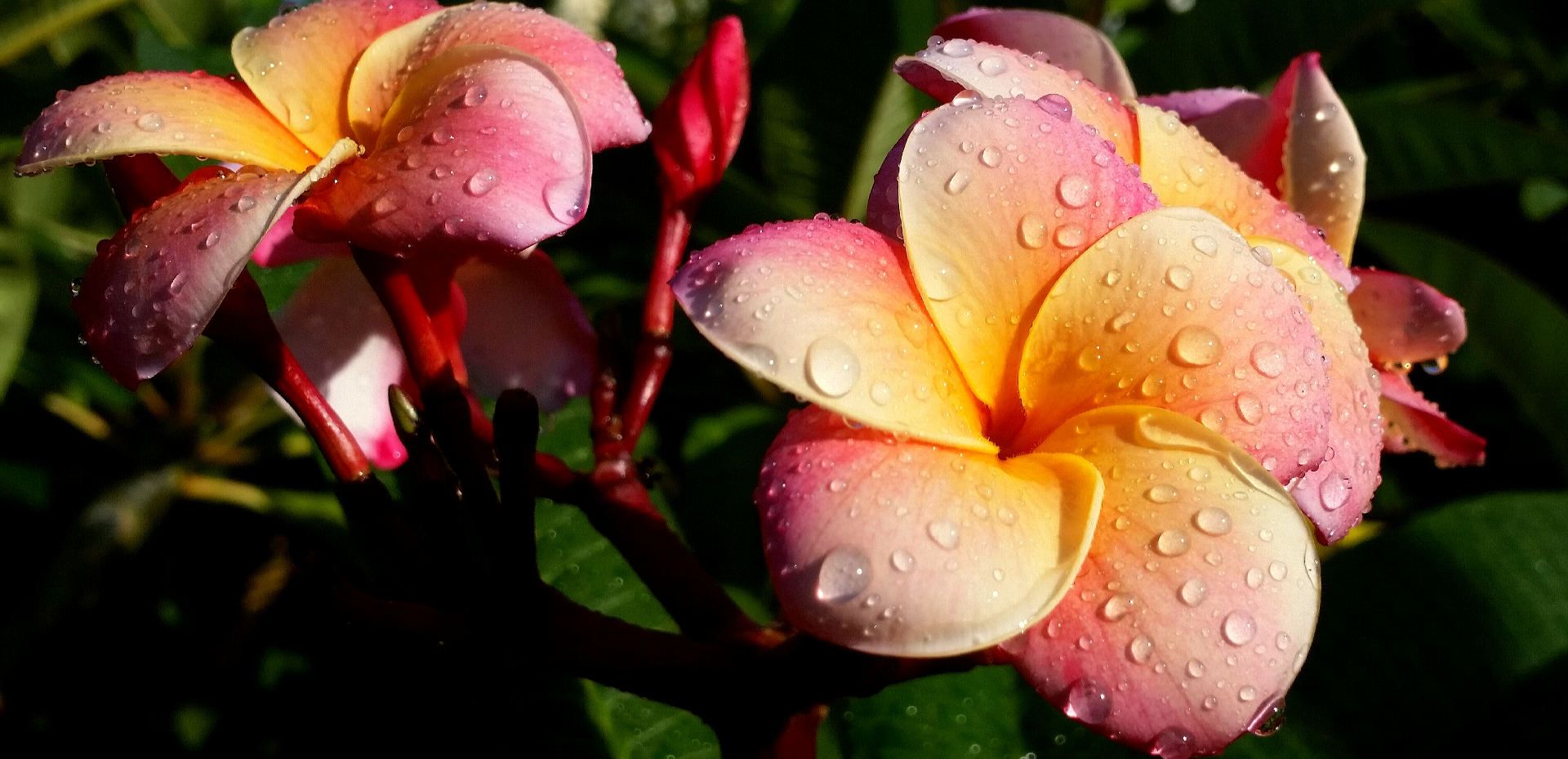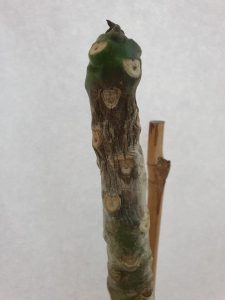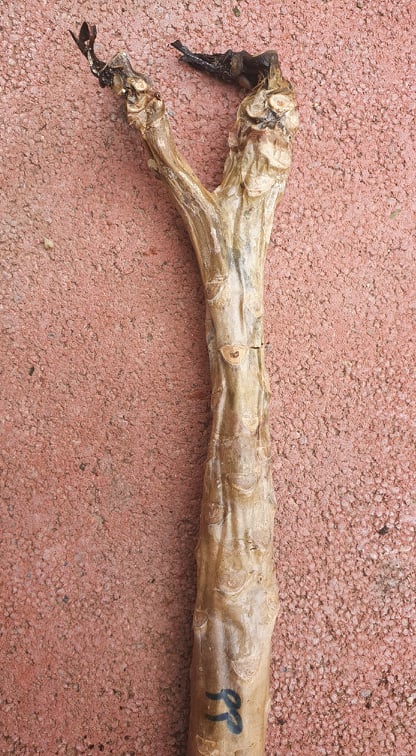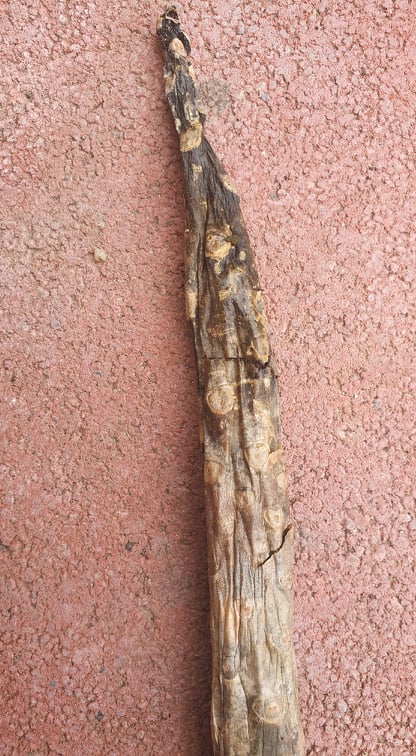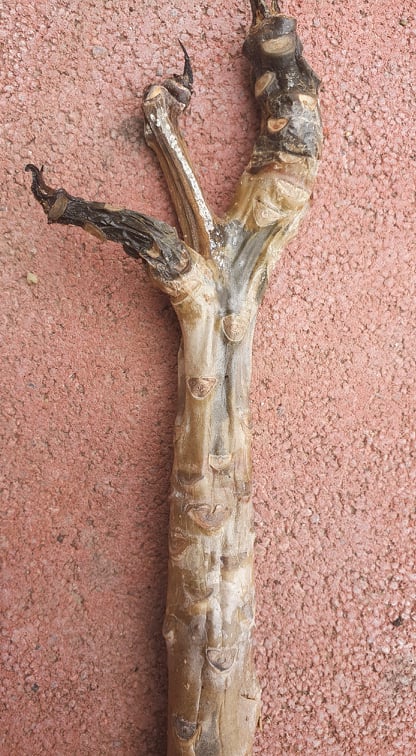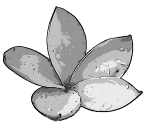
Through what creates Rot at my frangipani?
Unfortunately, we all know this situation. The beloved plumeria rots and no longer stands there like one but points with its tip to the east or west. Or the tip is totally muddy or black as night.
What have I done wrong?
most hobby gardeners ask themselves. Well, first of all you have to consider that we are dealing with living plants and everything living can get diseases. Nevertheless, in 90% of cases you can tell what kind of problem the plant has (had) by looking at the rotting spot.
In the picture above we have marked the typical rot spots on a Plumeria plant in red and written a number next to each one. Here you can now see which number can indicate which disease or which cause (IT DOES NOT HAVE TO!)
1. black / brown shoot tip
Können folgende Ursachen haben: Black Tip Fungus (eine sehr gefährliche Pilzerkrankung, es MUSS geschnitten werden und die abgetrennten Teile müssen sicher entsorgt werden). Zugluft bei der Überwinterung. Man erkennt den Unterschied zwischen dem Pilz und der Zugluft darin, dass Triebe die durch Zugluft faulen, nicht so schwarz sind wie durch Pilz befallene.
Weitere Ursache kann leichter Frost an den Triebspitzen sein. Bei Zugluft und Frost ist es nicht notwendig zu schneiden. Die Triebspitze wird abtrocknen und unterhalb der kranken Stelle wir die Frangipani neu austreiben.
Rot due to leaf breakage: If you break off the leaves in autumn and do not cut them, this can injure the connective tissue of the plant, giving bacteria a free path and the area begins to rot. In such cases, the leaves should be cut because foreign bodies in the form of bacteria or fungi are present in the plant.
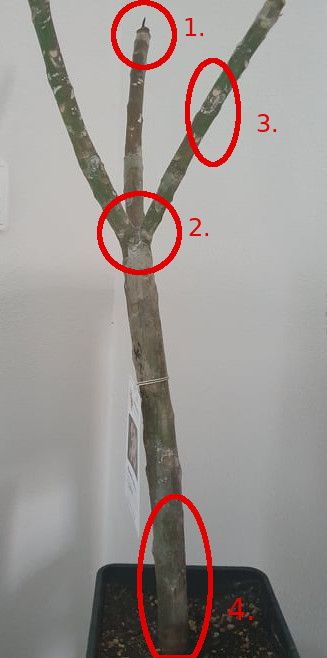
The typical rot spots on a Plumeria plant
2. rotting on an old branch or an old flower
If the plant rots in such a place, the cause is usually that one of the shoots has been accidentally bent, causing small hairline cracks in the connective tissue and thus allowing bacteria to enter the plant. Another common cause is that the hobby gardener breaks off the old flower shoots instead of letting them simply fall off by themselves. This can also injure the plant there and bacteria and fungi have free rein!
If such a spot rots, 95% of the time pruning is necessary. Often, however, the upper shoots can be re-rooted and the lower shoots will sprout again.
3. rotting or soft spots on the surface of a side shoot
A rotten spot on a side shoot often occurs because the impatient hobby gardener often presses on the plant during the winter break to see if it is possibly soft... If he does this too often, it will become soft and rot because the fine tissue under the bark is injured and then begins to rot.
Another cause can be injuries caused by leaf breakage in autumn or by insects (some insects pierce small holes in the trunk). Bacteria or fungi get into the injuries and can then simply attack the plant. Here too, cutting is often the only solution.
The plant can also be injured after or during a spider mite infestation and thus bacteria can enter the plumeria and lead to rot. In the picture above you can see a typical example of rot after a spider mite infestation.
4. rot at the base of the stem above the ground
If the plant rots just above the soil, it is often a sign of too much moisture especially during the winter break. If a plant starts to rot there in the winter quarters or even bows 90°C, it is a sign that the soil was too moist or the watering in winter was rather a bad idea.
Important: When you put a plant into winter quarters, the soil should be dry or dust-dry. If not, leave the leaves on the plant for another 1-2 weeks so that the metabolism in the roots is not abruptly stopped and the moisture can still be decomposed.


